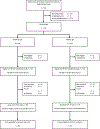Mid-Childhood Outcomes after Dextrose Gel Treatment of Neonatal Hypoglycaemia: Follow-Up of the Sugar Babies Randomized Trial
- PMID: 36516806
- PMCID: PMC9992292
- DOI: 10.1159/000527715
Mid-Childhood Outcomes after Dextrose Gel Treatment of Neonatal Hypoglycaemia: Follow-Up of the Sugar Babies Randomized Trial
Abstract
Introduction: Dextrose gel is widely used as first-line treatment for neonatal hypoglycaemia given its cost-effectiveness and ease of use. The Sugar Babies randomized trial first showed that 40% dextrose gel was more effective in reversing hypoglycaemia than feeding alone. Follow-up of the Sugar Babies Trial cohort at 2 and 4.5 years of age reported that dextrose gel appeared safe, with similar rates of neurosensory impairment in babies randomized to dextrose or placebo gel. However, some effects of neonatal hypoglycaemia may not become apparent until school age.
Methods: Follow-up of the Sugar Babies Trial cohort at 9-10 years of age was reported. The primary outcome was low educational achievement in reading or mathematics. Secondary outcomes included other aspects of educational achievement, executive function, visual-motor function, and psychosocial adaptation.
Results: Of 227 eligible children, 184 (81%) were assessed at a mean (SD) age of 9.3 (0.2) years. Low educational achievement was similar in dextrose and placebo groups (36/86 [42%] vs. 42/94 [45%]; RR 1.04, 95% CI 0.76, 1.44; p = 0.79). Children allocated to dextrose gel had lower visual perception standard scores (95.2 vs. 100.6; MD -5.68, 95% CI -9.79, -1.57; p = 0.006) and a greater proportion had low (<85) visual perception scores (20/88 [23%] vs. 10/95 [11%]; RR 2.23, 95% CI 1.13, 4.37; p = 0.02). Other secondary outcomes, including other aspects of visual-motor function, were similar in both groups.
Conclusion: Treatment dextrose gel does not appear to result in any clinically significant differences in educational achievement or other neurodevelopmental outcomes at mid-childhood.
Keywords: Neurodevelopment; RCT; Visual function.
© 2022 The Author(s). Published by S. Karger AG, Basel.
Conflict of interest statement
Conflict of Interest Statement
The authors have no conflicts of interest to declare.
Figures
References
-
- Harris DL, Weston PJ, Harding JE. Incidence of neonatal hypoglycemia in babies identified as at risk. J Pediatr. 2012. Nov;161(5):787–91. - PubMed
-
- Kaiser JR, Bai S, Gibson N, Holland G, Lin TM, Swearingen CJ, et al. Association Between Transient Newborn Hypoglycemia and Fourth-Grade Achievement Test Proficiency: A Population-Based Study. JAMA Pediatr. 2015;169(10):913–21. - PubMed
-
- Harris DL, Weston PJ, Signal M, Chase JG, Harding JE. Dextrose gel for neonatal hypoglycaemia (the Sugar Babies Study): a randomised, double-blind, placebo-controlled trial. The Lancet. 2013;382(9910):2077–83. - PubMed
-
- Alsweiler JM, Woodall SM, Crowther CA, Harding JE. Oral dextrose gel to treat neonatal hypoglycaemia: Clinician survey. J Paediatr Child Health. 2019. Jul;55(7):844–50. - PubMed


